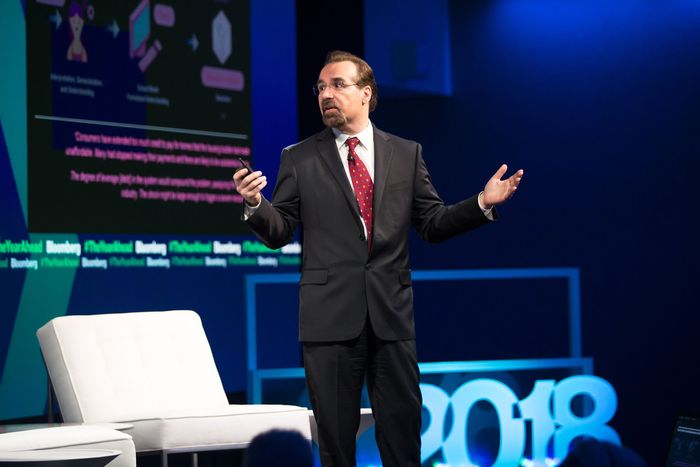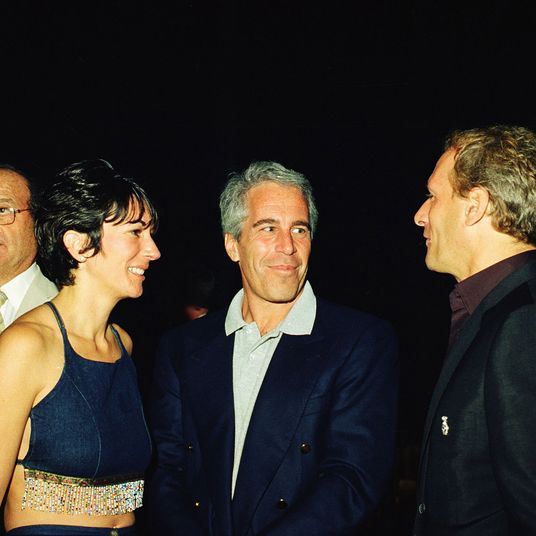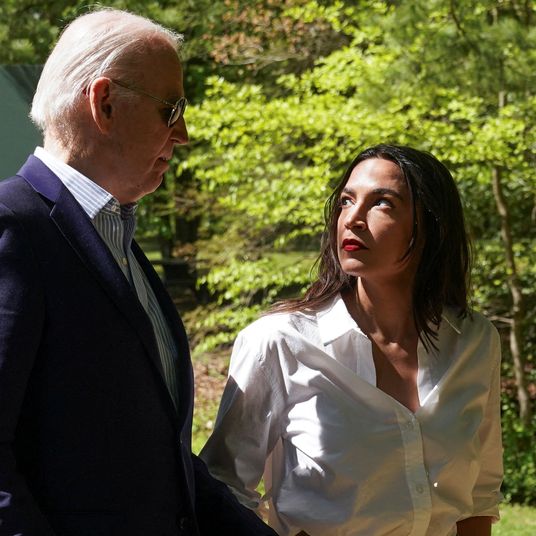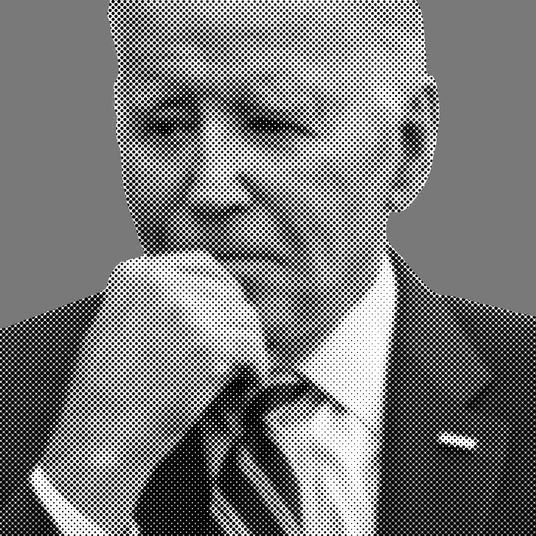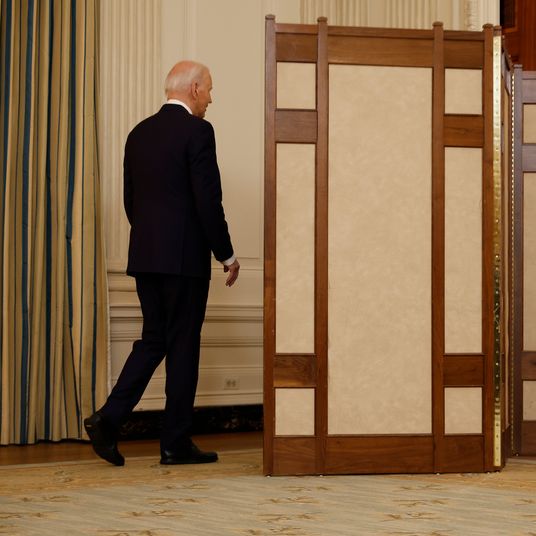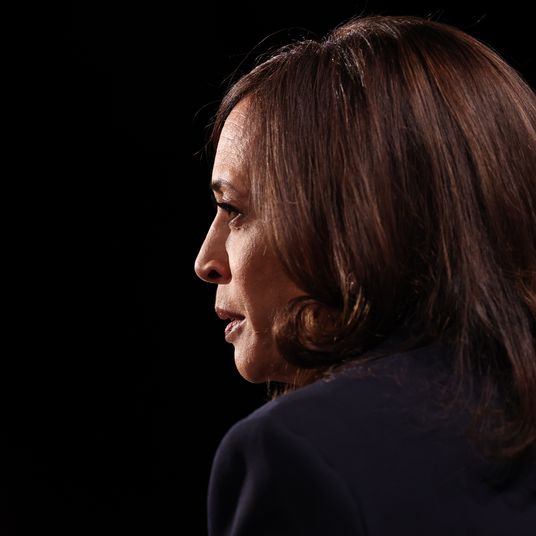
There’s piss on the floor.
So read the email from Ray Dalio, founder of the world’s largest hedge fund, Bridgewater Associates, and a billionaire many times over. It would be read by more than 1,000 of his underlings at the company.
Everyone at Bridgewater would soon learn the backstory. Dalio had excused himself from a meeting and walked to the nearest restroom at Bridgewater’s sprawling, medieval-stone-style headquarters near Westport, Connecticut. After relieving himself at the urinal, Dalio glanced down. There was piss on the floor.
This couldn’t be allowed to go on, Dalio said. Whose was it? And who had permitted it to happen?
“If people can’t aim their fucking pee, they can’t work here,” Dalio proclaimed.
It seemed inconceivable that it could be an accident. After all, Dalio ruled Bridgewater under what he called his “Principles,” which held that no matter was too small for investigation. There were hundreds of Principles, including one that stated, “People have to value getting at truth so badly that they are willing to humiliate themselves to get it.” Employees were instructed to “probe” one another’s work, as Dalio put it, on a daily basis. That wasn’t all. As part of what Dalio called “radical transparency,” a team of videographers and editors made tapes and videos of Dalio’s many lessons to his staff. These were uploaded into what Bridgewater called its “Transparency Library,” viewable internally. All employees at Bridgewater — from top investment strategists to receptionists — were required to view cases pulled from this library.
That puddle of urine on the bathroom would be the subject of one of these cases. Dalio summoned the hedge fund’s head of facilities for questioning. Staff were assigned to a rotating guard, standing outside the restroom to take notes on all who entered — and whether they left clean floors. After each visitor, a member of the cleaning crew would rush in to mop. New urinals were brought in for testing. Stickers were applied to the porcelain to give men a more effective target. Then the exact placement of the stickers was probed.
For all that, Dalio was never able to figure out exactly what had happened at that urinal.
There’s plenty of weird behavior in the business world, from Mark Zuckerberg’s glamour-shot hydrofoiling with an American flag on Independence Day to Goldman Sachs CEO David Solomon’s boasting to his underlings that he — and only he — had received a blowjob the night before.
And then there is Dalio and Bridgewater.
Since founding Bridgewater nearly 50 years ago, Dalio has become one of the world’s richest investors (Forbes pegs his net worth at roughly $20 billion). He is widely credited with having predicted and profited from the 2008 financial crisis, which made him famous. Yet the Greenwich, Connecticut, resident professes to be seeking something more important than the mere accumulation of wealth. His main interest, as he wrote in his best-selling autobiography-cum–self-help book, Principles: Life and Work, is to lead others toward “meaningful lives” and “meaningful relationships.”
Core to that effort is Dalio’s narrative that all Bridgewater employees are on an equal playing field and that any difference in rank or authority is due only to a rigorous system that susses out merit. That system involves employees constantly rating one another, taking real-time polls in meetings on whether a speaker is right or wrong, voting on whom to hire and fire, and being quizzed on internal case studies and investigations. This corporate culture, featuring a strict and overarching dogma created and enforced by a charismatic leader, has been repeatedly compared to a cult. It’s a comparison Dalio rejects. As he told one interviewer, “It’s the opposite of a cult. It’s independent thinking. It’s you knowing that you have the right and obligation to make sense of everything. It is a culture.”
Dalio declined to be interviewed for the book from which this article is adapted. This excerpt is based on dozens of interviews with current and former Bridgewater employees, as well as on copies of emails, recordings, internal company documents, and published interviews and articles.
Dalio’s lawyer said the Bridgewater founder “treated all employees equally, giving people at all levels the same respect and extending them the same perks.”
While Dalio is hardly the first financier to develop a taste for the spotlight, there’s no doubt that he’s been fabulously successful at selling the gospel of Ray. Over the past ten years, he has become world-famous, appearing on major broadcast and cable networks, popular podcasts, and magazine covers and starring in TED Talks. Inside Bridgewater, Dalio has bragged that Bill Gates, Elon Musk, and Jack Dorsey are all interested in his Principles (none of those three would comment). He has said that Sean “Diddy” Combs asked to be personally mentored. He was interviewed by Gwyneth Paltrow, who suggested he run for president.
The truth is that at Bridgewater, some are more equal than others. And Ray Dalio is the most equal one of all.
The piss case, as it was known internally, was merely a small example of the expansive Bridgewater employee-rating system in action. Staffers were given iPads and directed to rank one another on a one-to-ten scale on their performance dozens of times per day in categories derived from Dalio’s Principles, such as “ability to self-assess” and “pushing through to results.” Dalio would often review the results in his office, where the Bridgewater founder would lean back in his chair, chewing on Scotch tape, as was his habit when he was concentrating, and review the ever-changing ratings of those under him.
The goal of all the data, Dalio would say, was to sort everyone at Bridgewater on a single scale. At Bridgewater, the most important assessment was “believability,” a score that was applied to each category. If one was judged highly believable in “pushing through to results,” for instance, then his or her ratings of other people in the same category would be counted more heavily. Dalio called this “believability weighting,” and in virtually all important categories, Dalio expected that his rating would be the highest, or close to it, at the firm. That status essentially gave him the final word, no matter how many others at Bridgewater might have disagreed with him.
For more than a decade, at a cost that would balloon to over $100 million, Bridgewater attempted to develop secret software to expand the Principles into what employees widely described as a computerized version of Dalio himself. One iteration carried the nickname “Prince,” short for Principles. Prince was to be the equivalent of Siri, the voice-activated assistant on Apple products. Just as billions of consumers around the world spoke to Siri to get the answers to their queries, so, too, would Prince be the singular source for answers according to the Principles and highly believable employees. The product was intended for use first inside Bridgewater and then, Dalio hoped, by the world.
For his star creation, Dalio hunted for a star technologist to bring it to life. Near the end of 2012, he found one in computer scientist David Ferrucci, as close to a celebrity as there was at that time in the field of artificial intelligence. Ferrucci had worked at IBM and led the team that created Watson, a question-answering AI system that made headlines by beating human competitors on Jeopardy!.
Ferrucci said publicly that he was enthusiastic about joining Bridgewater to help predict the direction of financial markets. This made perfect sense — any other hedge fund would have put Ferrucci to work on investments. Instead, Bridgewater put Ferrucci, who reported to Dalio’s deputy Greg Jensen, in charge of a new team that operated in secret and went by a strange name, the Systematized Intelligence Lab. Its main task was to add artificial intelligence to Prince and the other Principles rating tools. Few who weren’t a part of his group were let into the lab, and almost no one else at the hedge fund had a clue what was happening there.
Roughly one year into Ferrucci’s tenure at Bridgewater, Dalio burst into the hedge fund’s headquarters full of excitement. It was just after Christmas 2013, and the night before he had seen a new movie, the Oscar-nominated Her, about a forlorn single man, played by Joaquin Phoenix, who falls in love with his Siri-like virtual assistant, voiced by Scarlett Johansson. Dalio, too, had apparently been taken by Johansson’s sultry work. “Let’s get her,” Dalio said. “We’ll pay her to be the voice of Prince!” But Bridgewater’s staff couldn’t get Johansson’s representatives to return their calls. There was a tantalizing mystery to what was going on inside Ferrucci’s lab. Some of the few with access were consultants from the venture-capital billionaire Peter Thiel’s data-crunching firm, Palantir, famed as the tech spooks who helped hunt down Osama bin Laden.
What was becoming obvious to Ferrucci and his staff, however, was that Prince — and the Principles — were a mess. Ferrucci told colleagues he couldn’t figure out where to begin applying hard science to the rating tools. Before Ferrucci’s arrival, it seemed there had been no double-blind tests, no anonymous surveys — not even a simple regression analysis to show that the adoption of the Principles’ methods led to better results. (“I don’t believe in regressions,” Dalio told one employee who suggested it.)
Bridgewater’s most important results, the returns of its key hedge funds, seemed to even suggest the opposite: The more time that people spent on the Principles — and its associated arguments, votes, case studies, and rating experiments — the worse the company’s investments seemed to perform. In the six years following the financial crisis, Bridgewater’s main fund, Pure Alpha, turned in two good years and four poor ones. Still, Ferrucci tried to bring Dalio’s vision for the Principles rating tools to life. He modeled his approach on how IBM created Watson. The first step had been to gather a raw trove of real-world knowledge needed to produce answers. IBM engineers seeded Watson with millions of documents, newspaper articles, and books. Ferrucci and his team grappled with what an equivalent process might look like for a program grounded in the Principles. The goal was for Ferrucci’s software to be able to listen in real time to discussions at Bridgewater and identify which Principles needed to be applied at any given moment. He laid out a list of attributes in Dalio’s Principles and looked them up in the dictionary. “What does creativity actually mean?” he asked. The answer, from Merriam-Webster, was “the ability to create.” He looked up another attribute: lateral thinking. The definition: “A method for solving problems by making unusual or unexpected connections between ideas.” Ferrucci and his team found that many of the various attributes seemed to bleed into one another. Long periods of time were spent on futile attempts to define them in a manner that was workable in a software program. It was a slog.
(Ferrucci declined to be interviewed for this story. He denied that he used a dictionary to look up definitions of personality attributes. His spokeswoman wrote in an email about his work for Bridgewater, “Quantitative survey data was used to find statistically significant differentiation using industry-standard statistical methods.” Asked to elaborate, she declined.)
Ferrucci tried a different way. Dalio was the inventor of the Principles — surely he could tell the different attributes apart. Ferrucci decided to seed the software system with Dalio’s own definitions of the terms. Ferrucci’s team pulled hundreds of hours of videos from the Transparency Library, Bridgewater’s repository of meeting recordings, and tried to track patterns in when Dalio cited specific Principles. Ferrucci’s lab employees also went through years of Bridgewater’s old management-training videos — the same ones that all staffers were tested on, including the piss case — and painstakingly noted which Principles were used and in what context.
From all this effort, the researchers created a series of word clouds, intending to show whether employees who used certain language tended to rate highly in one attribute or another. More broadly, Ferrucci hoped to train a computer to read or listen to a passage of text and realize that, if certain words were used in a certain order, the topic at hand dealt with one Principle or another. If the scientists could nail the method, they could essentially create a computerized version of Dalio himself.
The goal proved elusive. Ferrucci’s team could find no pattern to predict when the Bridgewater founder — or anyone else at Bridgewater — would bring up one Principle or another. The employee ratings also showed little underlying logic. Ferrucci shared with colleagues a gradual awakening: Dalio’s system might not be a system at all.
A few days before Christmas 2014, roughly two years into Ferrucci’s tenure, Dalio called a meeting with him and a host of others from the lab to review progress on their work.
The rating system was still a work in progress, but Dalio had access to a prototype that graded more than 1,000 employees in dozens of categories. Dalio began pointing out problems with the ratings of specific Bridgewater employees. Some were rated too highly, Dalio said, which must have been an error in the calculations — the Bridgewater founder knew these individuals to be less competent than the numbers indicated.
Ferrucci sat quietly. Midway through his remarks, Dalio stopped and said, “I’m giving you direction. You’re not writing it down.”
“I’m taking in your input,” replied Ferrucci.
Dalio cocked his head. “You work for me.”
“I work for Greg.”
“No, you work for me.” Dalio waved his hands in a flutter of frustration. He turned to the dozen or so people in the room. “How many people think that Dave is looking at this the right way?”
One of Dalio’s assistants typed the prompt into her iPad, creating an instant poll for those in the room. The verdict was that Ferrucci was looking at it wrong.
Dalio continued, pointing out how unlikely it was that certain people could be rated in one way or another in certain attributes. He gave his list of tweaks: “This is what I want to see.”
Ferrucci’s voice came back, barely above a whisper: “That’s not a valid algorithm.”
Dalio cocked his head.
Ferrucci, voice quavering, said, “That’s not scientific, Ray.” The team couldn’t just make changes based on Dalio’s whims. “It’s not how I work. I can’t just take direction like this.”
The room seemed to shift. The group had seen Dalio tear into countless underlings before, but here he was on unfamiliar ground. He wasn’t in a position to argue computer science with his hand-picked expert. After the meeting, Ferrucci went from the meeting to Bridgewater’s parking lot visibly brimming with anger. Many present assumed he would quit.
Ferrucci’s spokeswoman said the scientist and Dalio “would regularly have disagreements and would openly debate … always respecting each other and their respective opinions.”
Bridgewater and Dalio declined to comment on the friction. In a joint statement, they said Dalio “has always believed that there are many dimensions to every person” and wanted “to develop an objective, measurable way to assess individuals’ relative strengths and weaknesses.”
The prospect of Ferrucci leaving the firm was treated as a five-alarm fire. Besides Dalio, he was the best-known Bridgewater employee. Also, quantitative investing was the wave of the future, and any rival hedge fund would have been thrilled to swoop in and hire Ferrucci. Bridgewater didn’t want to have to explain to its clients and the world that it had lost the IBM Watson inventor — particularly if the reason was that Ferrucci judged Dalio’s management system to be hogwash.
The day after Christmas, Ferrucci received a note that Dalio wanted to chat again, this time by phone, according to two people briefed on the call afterward. There would be no crowd around a table, and no recording for everyone to listen to. The two men could speak frankly about how to move forward.
Ferrucci told Dalio that he couldn’t do the ratings anymore.
Dalio asked what could get the scientist to change his mind.
Ferrucci was prepared for that question. He had an idea for a start-up company, Elemental Cognition, completely unconnected to Bridgewater or investing. Elemental Cognition would use the technology behind Watson to teach computers to understand common sense, human intuition. This could not be achieved merely by trawling the internet for knowledge or reading every book in existence. Elemental Cognition’s goal required the mastery of fundamental concepts such as time, causality, and social interaction. It would require advanced supercomputing and the services of a slew of Ph.D. researchers. All of this would be expensive, with no guarantee that anything would work out.
Dalio said that he would fund it. He offered tens of millions of dollars from Bridgewater, on one condition. Ferrucci could spend only half his time on his dream company. The other half of the time, Ferrucci would pursue the work that Dalio wanted him to pursue.
Ferrucci took the deal.
With Ferrucci now having the equivalent of part-time status, Dalio hunted for more big-name technology help. In May 2016, he hired Steve Jobs’s former lieutenant, Jon Rubinstein, who at Apple had been nicknamed the Podfather for helping create the first iPod. In exchange for compensation of as much as $50 million over the first two years, Rubinstein became Bridgewater’s co–chief executive.
“Technology is pervasively important at Bridgewater, especially since one of our major strategic initiatives in the coming years is to continue building out the systemized decision-making that has been so successful in our investment area and to extend it to our management as well,” Dalio wrote to clients in an announcement of the new hire. Rubinstein’s phone quickly blew up with well-wishers congratulating him on landing a prestigious gig at the world’s largest hedge fund.
It didn’t take long for Rubinstein to start having doubts. In his first days, Rubinstein sat, befuddled, as a procession of Bridgewater staffers drilled him on the Principles. They showed him slides and videos of employees being investigated and probed by their superiors, including Dalio. Rubinstein was immediately turned off. His former boss Jobs had a well-earned reputation for being controlling, but the Apple founder never claimed it was based in any highbrow philosophy.
Rubinstein, who declined to comment, was cognizant of everything he’d heard about the Bridgewater founder’s love of raw honesty and decided to tell Dalio what was on his mind: “You’ve got 375 Principles. Those aren’t principles. Toyota has 14 principles. Amazon has 14 principles. The Bible has ten. Three hundred and seventy-five can’t possibly be principles. They are an instruction manual.”
Dalio told him he simply needed more time to understand it all.
A few months into his gig, Rubinstein was beginning to wonder aloud if there was a Principles system at all. The hedge fund was spending tens of millions of dollars on developing the Principles ratings software, but when Rubinstein tried to investigate what it actually did, he was simply told that it measured “believability.” Many told him the systems involved secret calculations from the former IBM scientist Ferrucci and that the researcher told almost no one how it worked.
This immediately struck the former Apple executive as off. He had spent his life working with experts like Ferrucci, and in Rubinstein’s experience, corporate scientists tended to overexplain their work to company executives in excruciating, unnecessary detail. The struggle was usually to get them to shut up.
Rubinstein was no junior hire, so he sought out Ferrucci in person. The two men exchanged pleasantries, then the co-CEO dropped his biggest question: “How do you calculate believability?”
Ferrucci briefly broke eye contact. “I’m not going to tell you.”
“Why?”
“I’m embarrassed.”
(Ferrucci’s spokeswoman said he doesn’t recall this conversation.)
Rubinstein had been vexed from the start by the mysterious, omnipotent metric of “believability.” Ferrucci’s lab, Rubinstein would conclude, was wasting its time. Those at Bridgewater who had been rated highly believable in certain areas didn’t earn those scores through any complicated algorithm of artificial intelligence. They earned it by being an artificial Ray Dalio. The secret to becoming believable at Bridgewater was to model oneself after the only man who mattered.
Bridgewater didn’t run on believability. It ran on believers.
“Ray, this is a religion,” Rubinstein told Dalio.
That would be Rubinstein’s final day at Bridgewater. He agreed to stay for several months longer, in part to save face after his splashy arrival. Rubinstein agreed to keep quiet publicly about his feelings on the firm, and Dalio agreed that the firm would honor paying out the remainder of the co-CEO’s two-year compensation. It added up to tens of millions of dollars for less than a year of work.
Much to the surprise of some who worked for him, Ferrucci stayed on for years longer. He split the time between his own company, which Dalio funded, and project after project at Bridgewater, work that Dalio came up with for him. One Bridgewater effort, code-named Allstream, was essentially One Rating to Rule Them All — a metric that would replace all other categories and boil employees down to a single statistic that encompassed their overall worth at the firm. Others on his team worked on a project called Video Book, which would package Bridgewater case studies and sell them to the public for $75 apiece. Neither initiative was ever completed.
By late 2019, after many years of fruitless toil, Ferrucci had hit his limit. He seemed reluctant to make a big deal about leaving — that might call attention to how little he’d accomplished. Instead, in an agreement with Dalio, he arranged to quit his work at the hedge fund but keep offices on the Bridgewater campus, where he gave interviews about his latest computer-science research. None of them had anything to do with Dalio, Bridgewater, or the Principles. Neither Bridgewater nor Ferrucci publicly acknowledged his departure.
Two years later, in late 2021, Bridgewater laid off most of the remaining staff dedicated to building the Principles software.
Excerpted from The Fund: Ray Dalio, Bridgewater Associates, and the Unraveling of a Wall Street Legend, by Rob Copeland (St. Martin’s Press, November 7).



